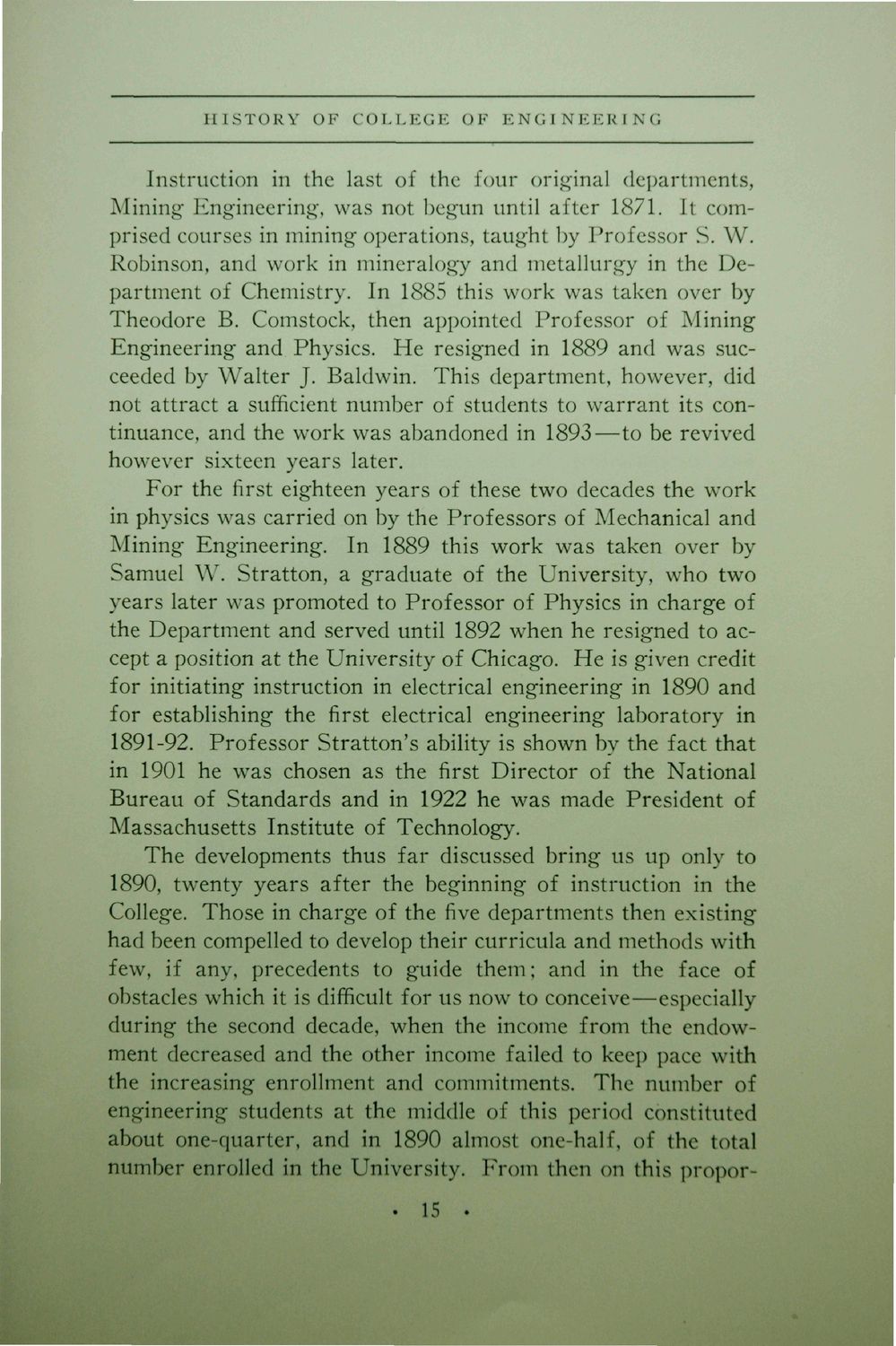| |
| |
Caption: Dedication - Talbot Lab
This is a reduced-resolution page image for fast online browsing.

EXTRACTED TEXT FROM PAGE:
HISTORY OF COLLEGE OF E N G I N E E R I N G Instruction in the last of the four original departments, Mining Engineering, was not begun until after 1871. It comprised courses in mining operations, taught by Professor S. W. Robinson, and work in mineralogy and metallurgy in the Department of Chemistry. In 1885 this work was taken over by Theodore B. Comstock, then appointed Professor of Mining Engineering and. Physics. He resigned in 1889 and was succeeded by Walter J. Baldwin. This department, however, did not attract a sufficient number of students to warrant its continuance, and the work was abandoned in 1893—to be revived however sixteen years later. For the first eighteen years of these two decades the work in physics was carried on by the Professors of Mechanical and Mining Engineering. In 1889 this work was taken over by Samuel W. Stratton, a graduate of the University, who two years later was promoted to Professor of Physics in charge of the Department and served until 1892 when he resigned to accept a position at the University of Chicago. He is given credit for initiating instruction in electrical engineering in 1890 and for establishing the first electrical engineering laboratory in 1891-92. Professor Stratton's ability is shown by the fact that in 1901 he was chosen as the first Director of the National Bureau of Standards and in 1922 he was made President of Massachusetts Institute of Technology. The developments thus far discussed bring us up only to 1890, twenty years after the beginning of instruction in the College. Those in charge of the five departments then existing had been compelled to develop their curricula and methods with few, if any, precedents to guide them; and in the face of obstacles which it is difficult for us now to conceive—especially during the second decade, when the income from the endowment decreased and the other income failed to keep pace with the increasing enrollment and commitments. The number of engineering students at the middle of this period constituted about one-quarter, and in 1890 almost one-half, of the total number enrolled in the University. From then on this propor. IS .
| |